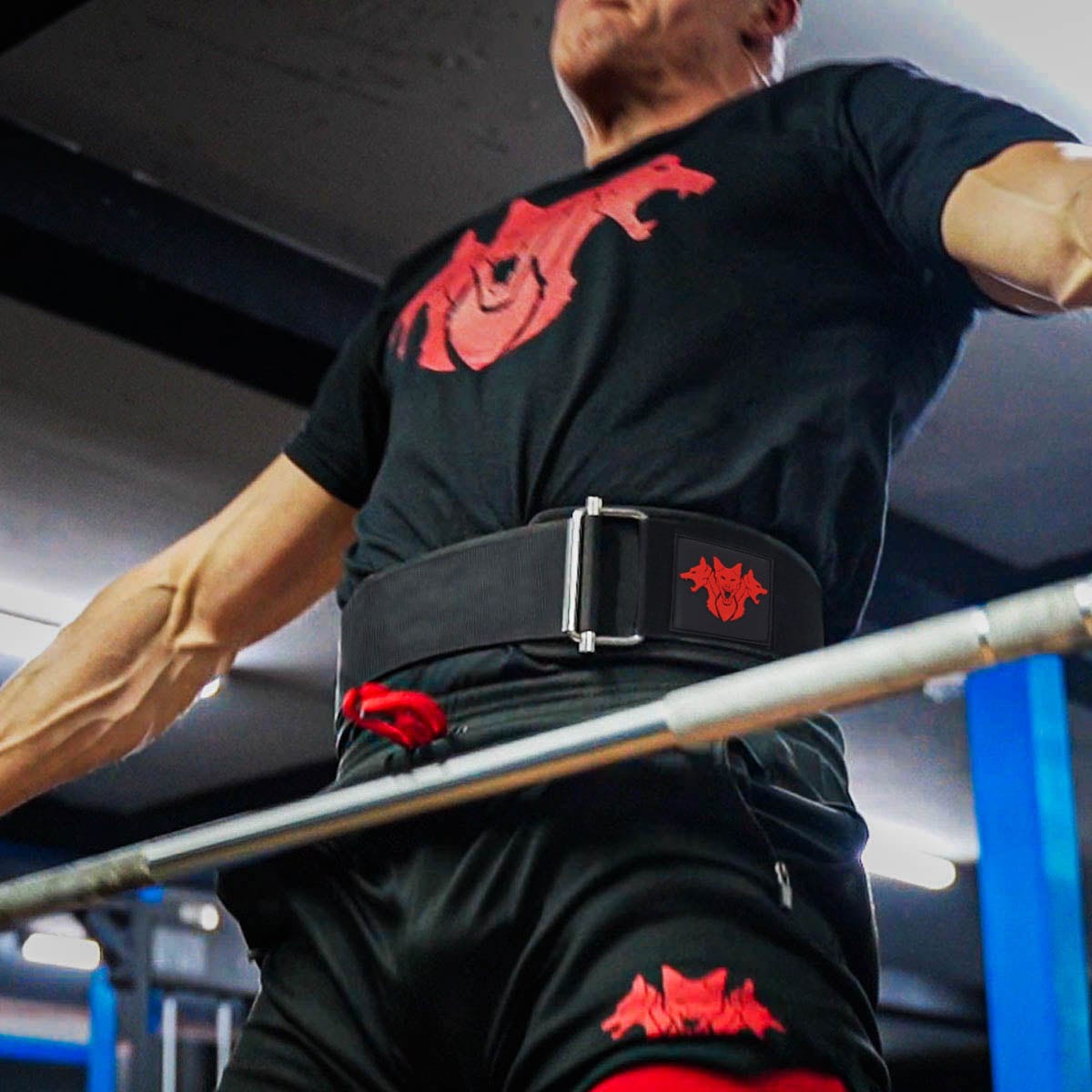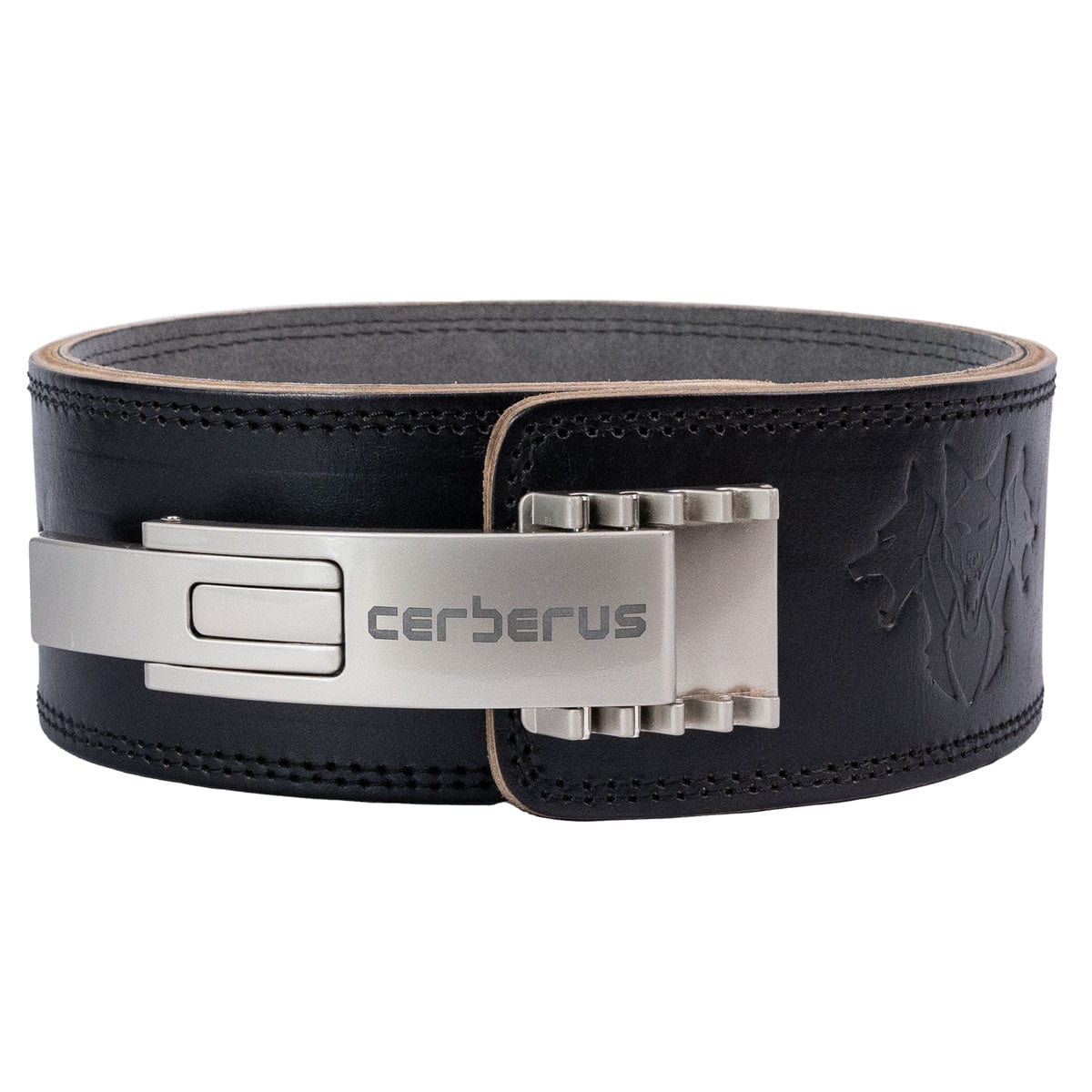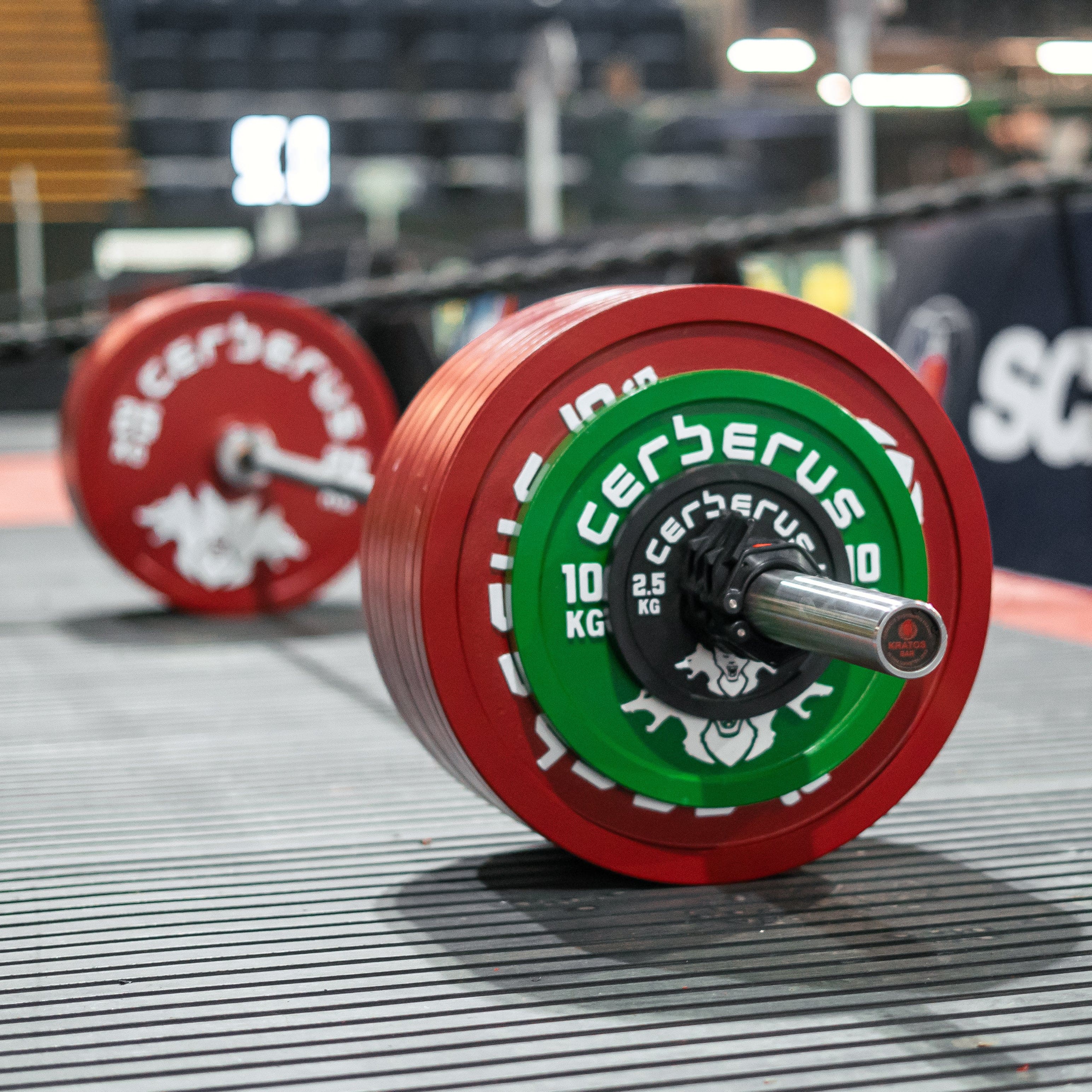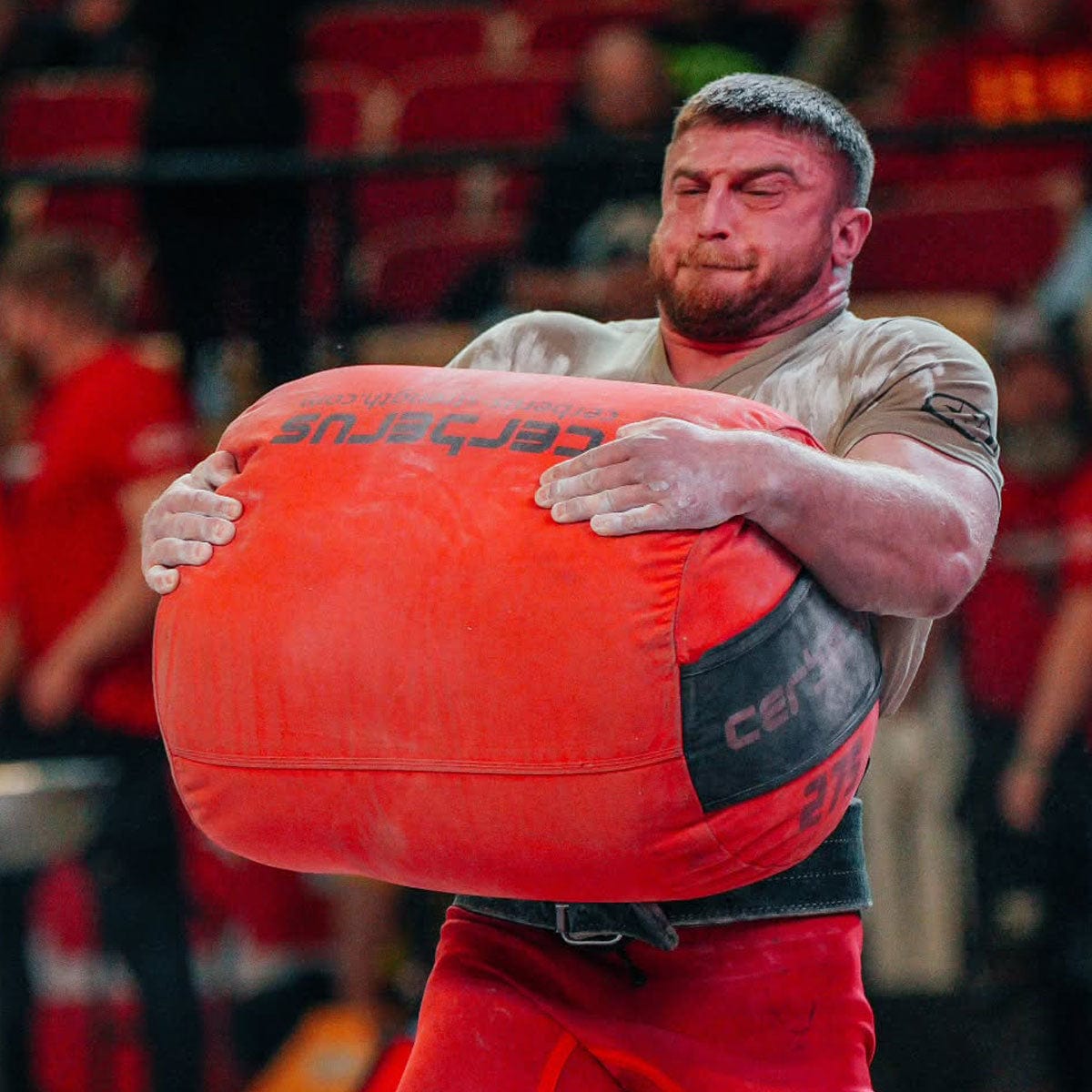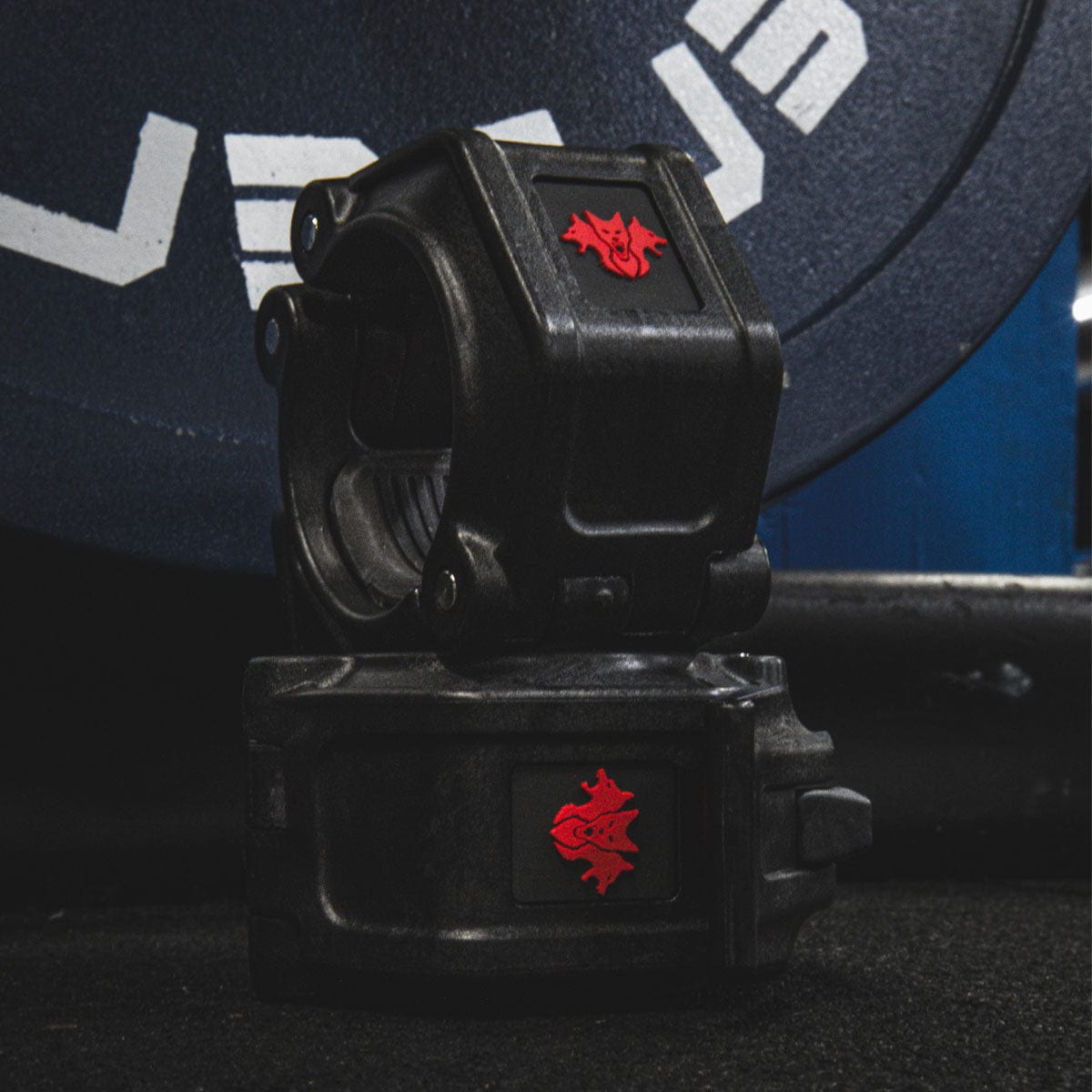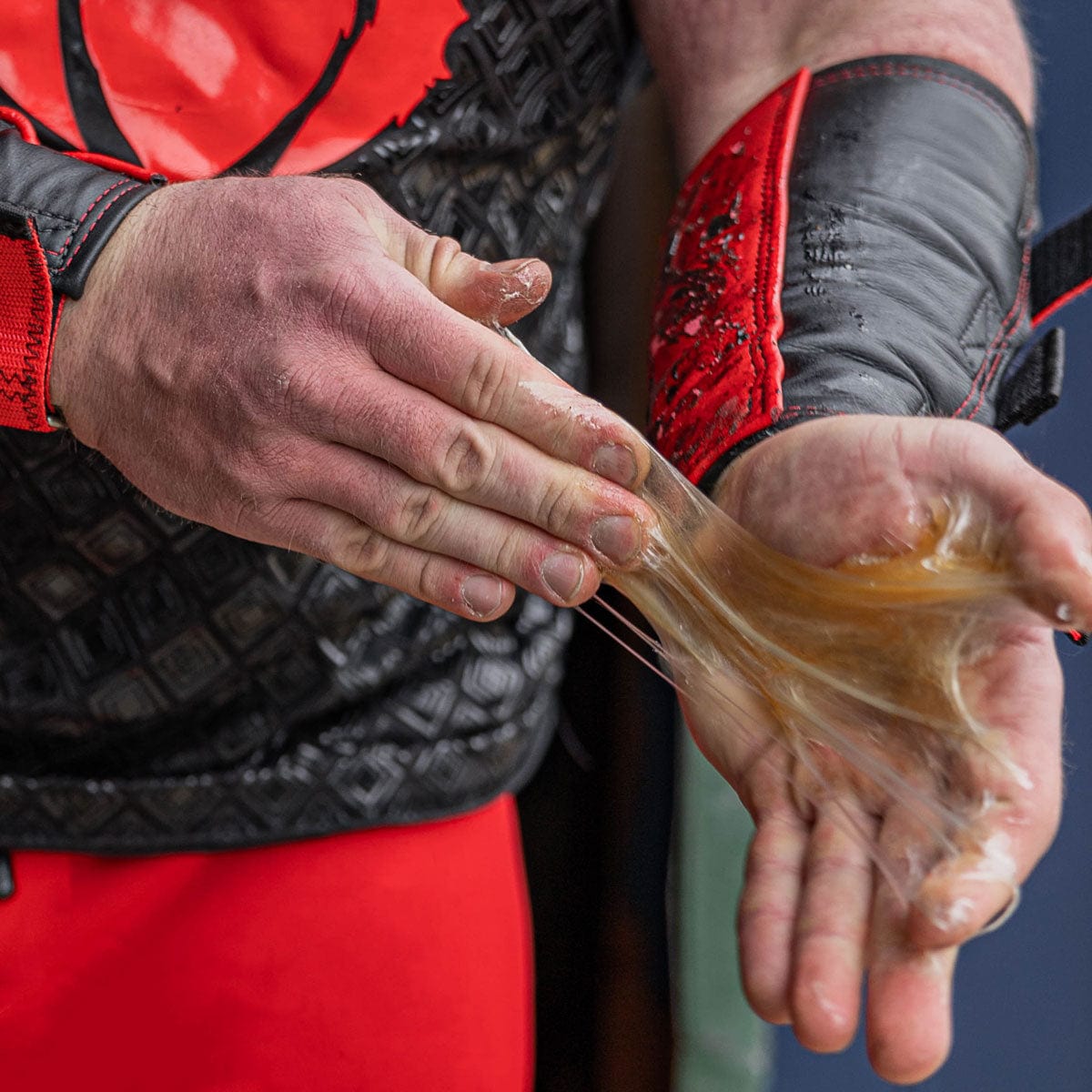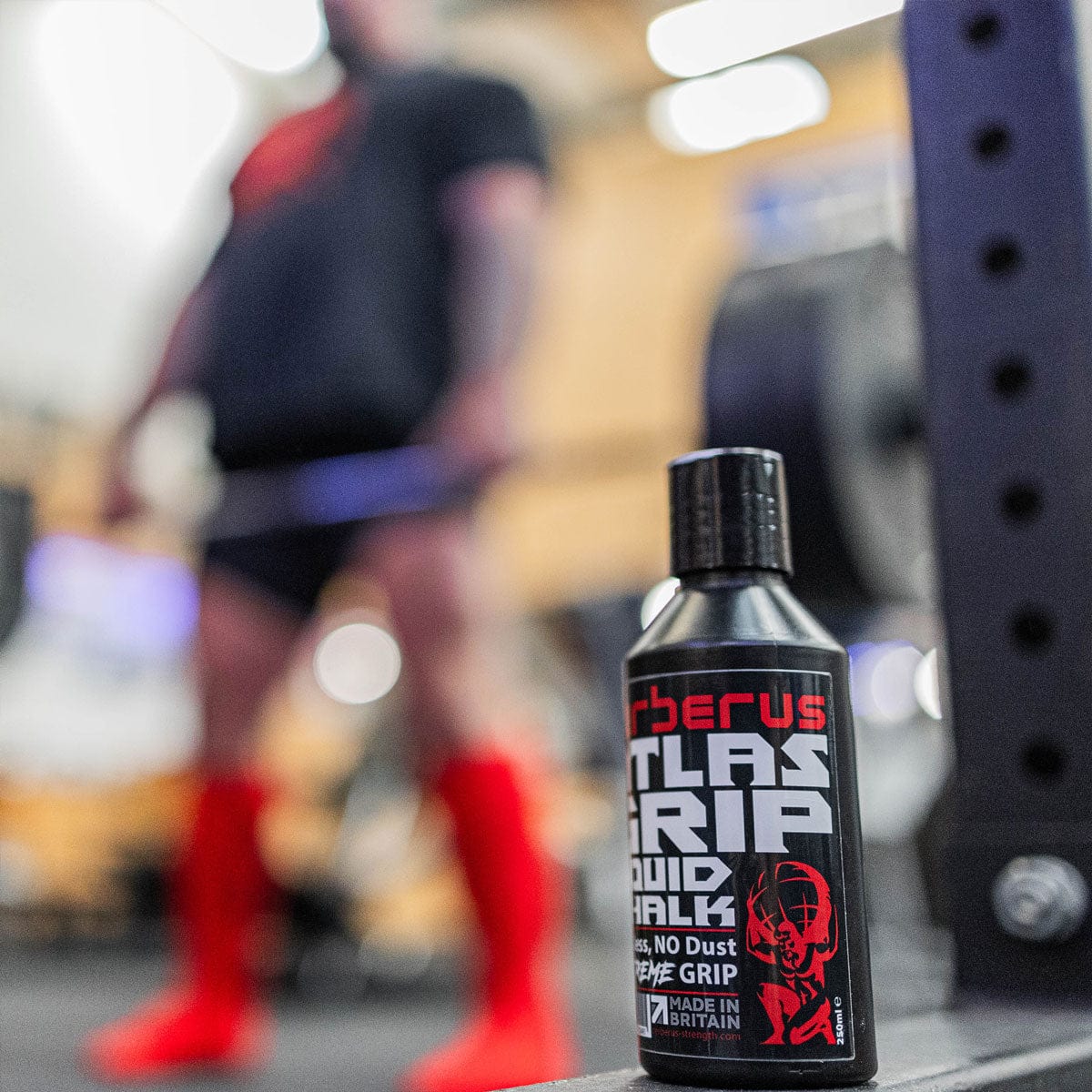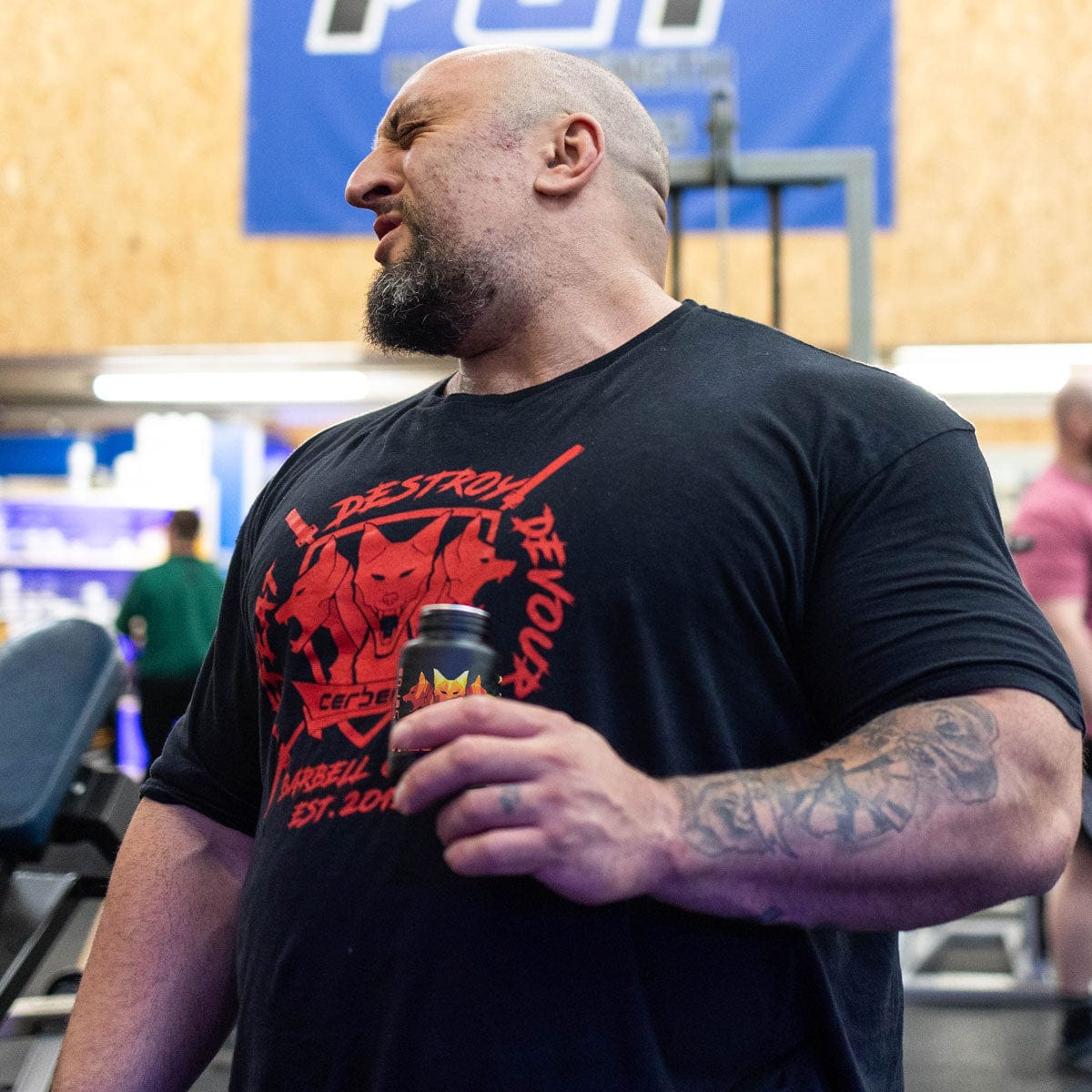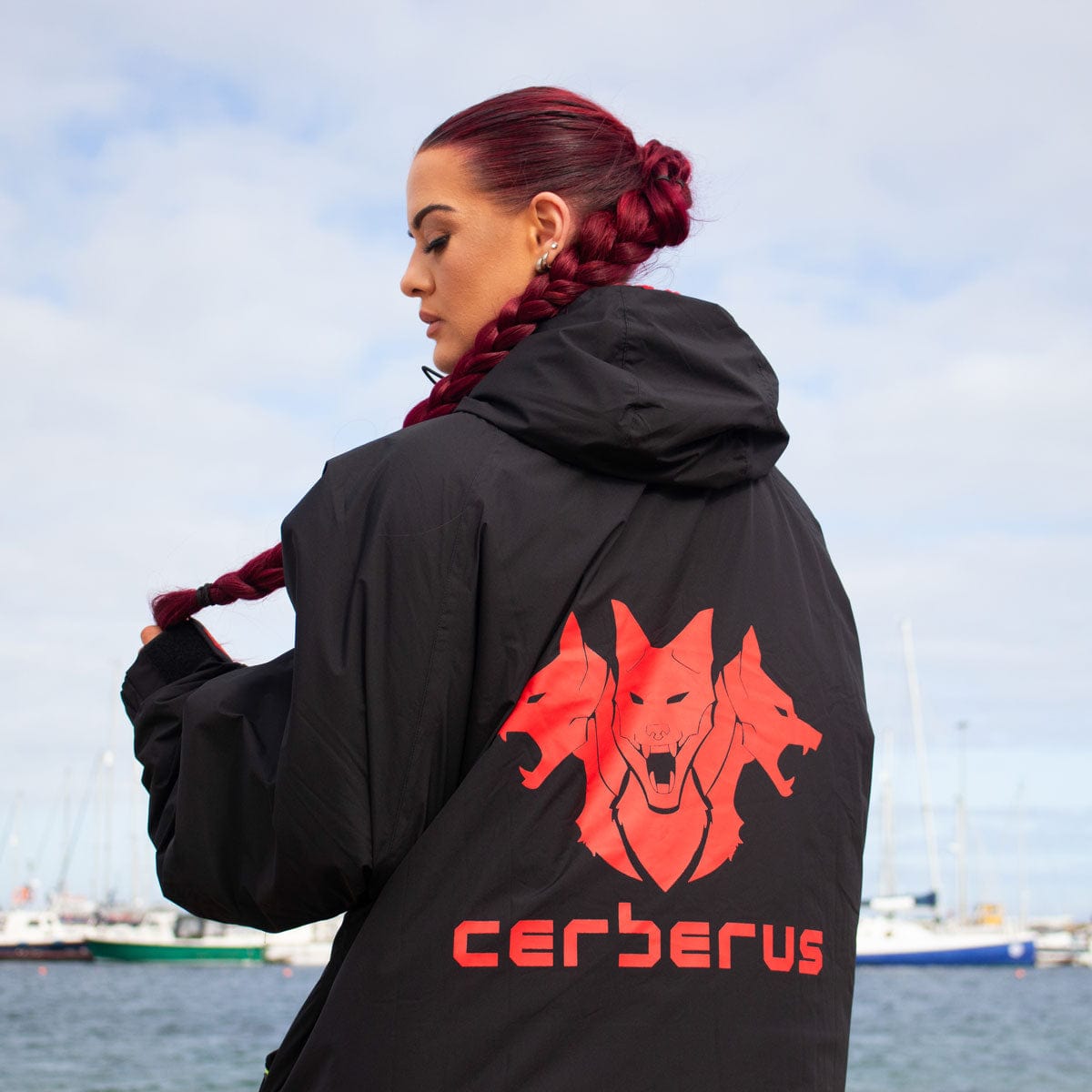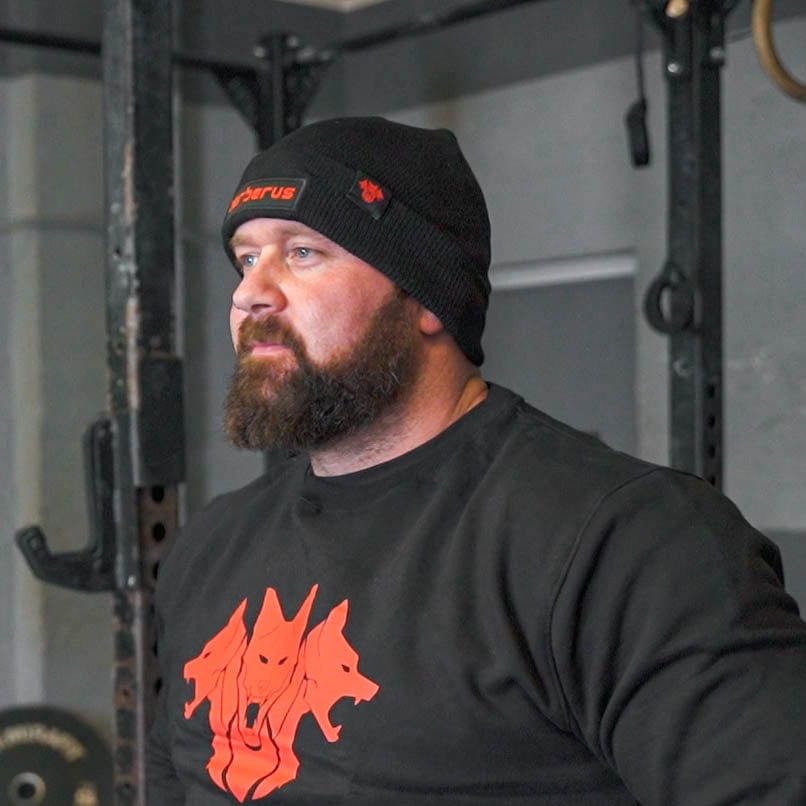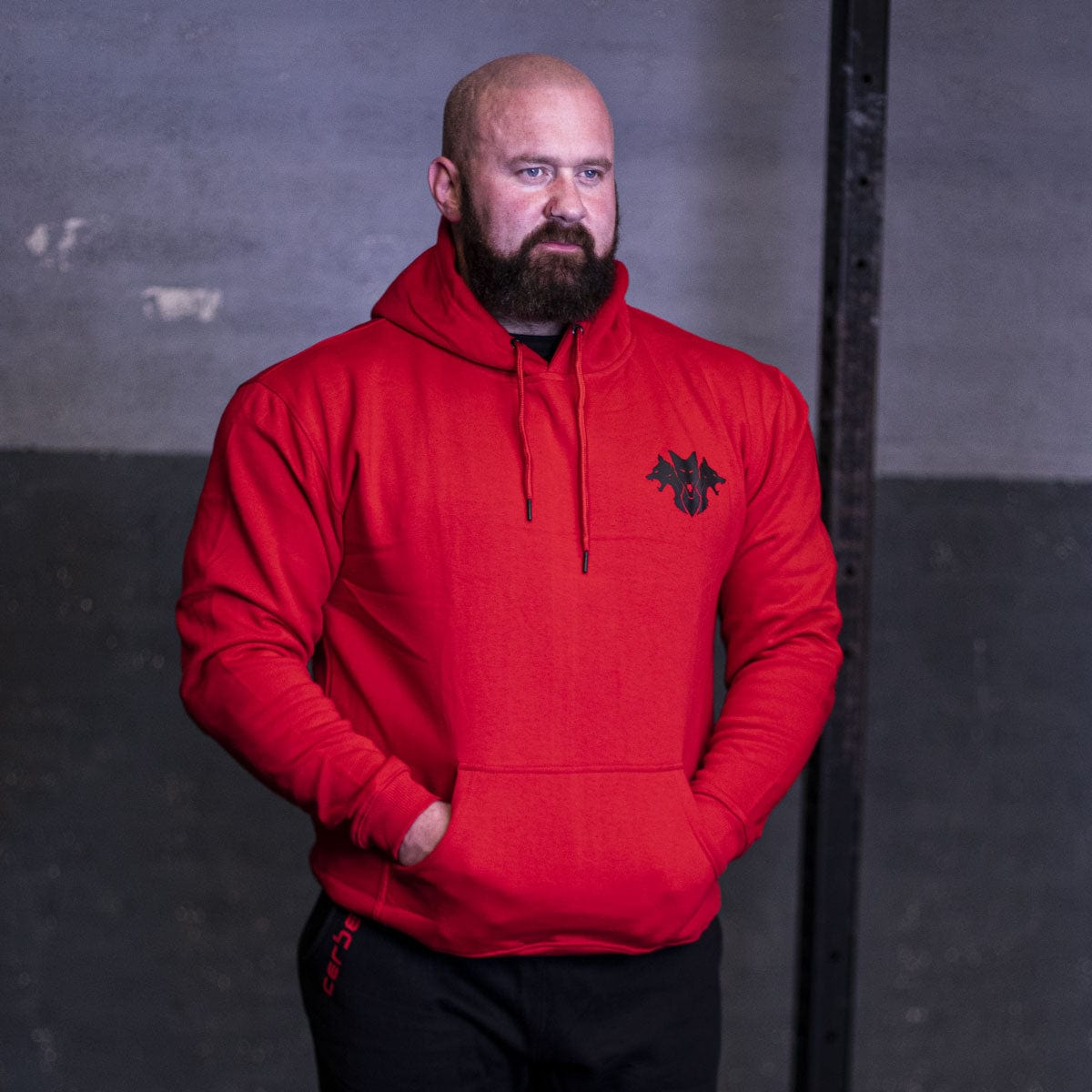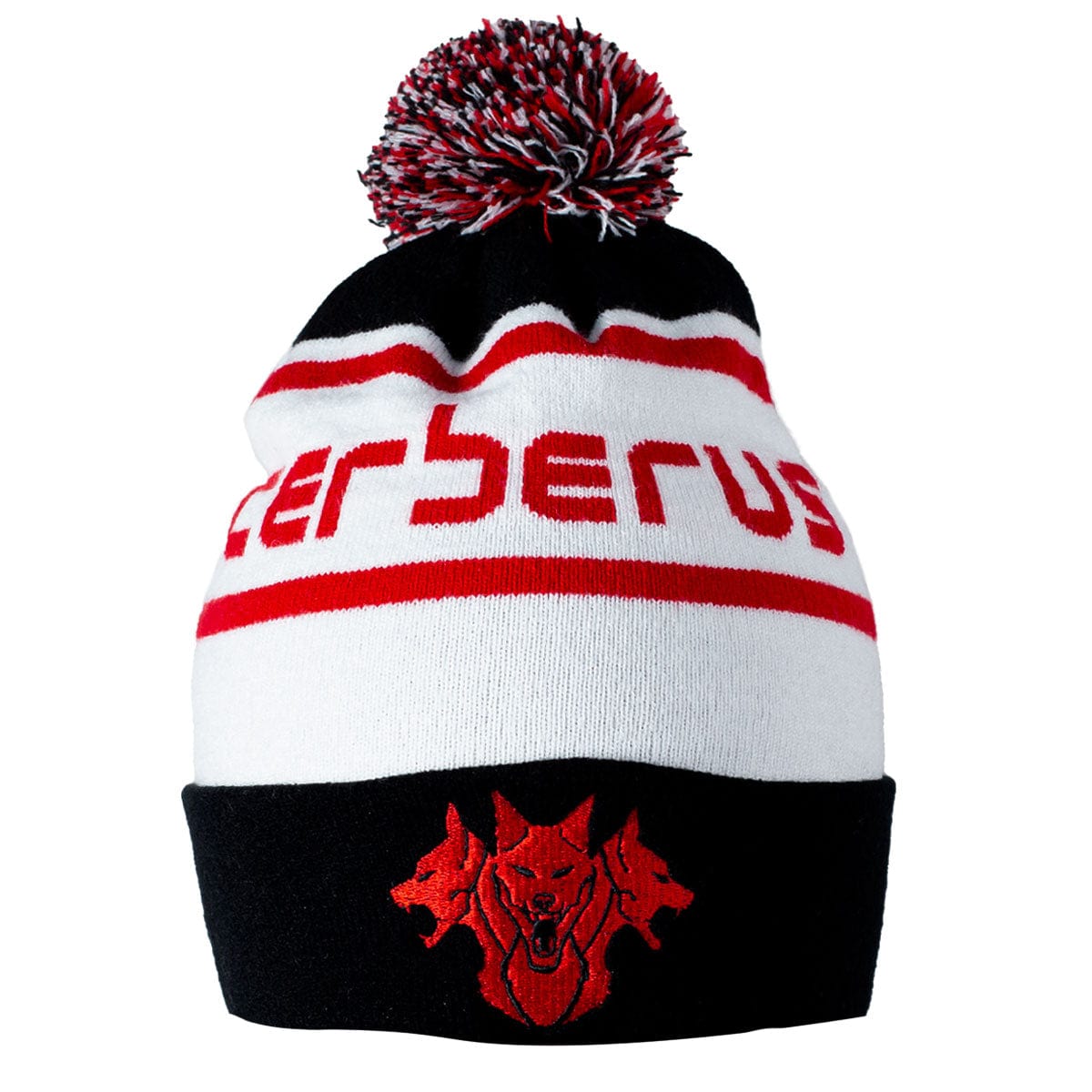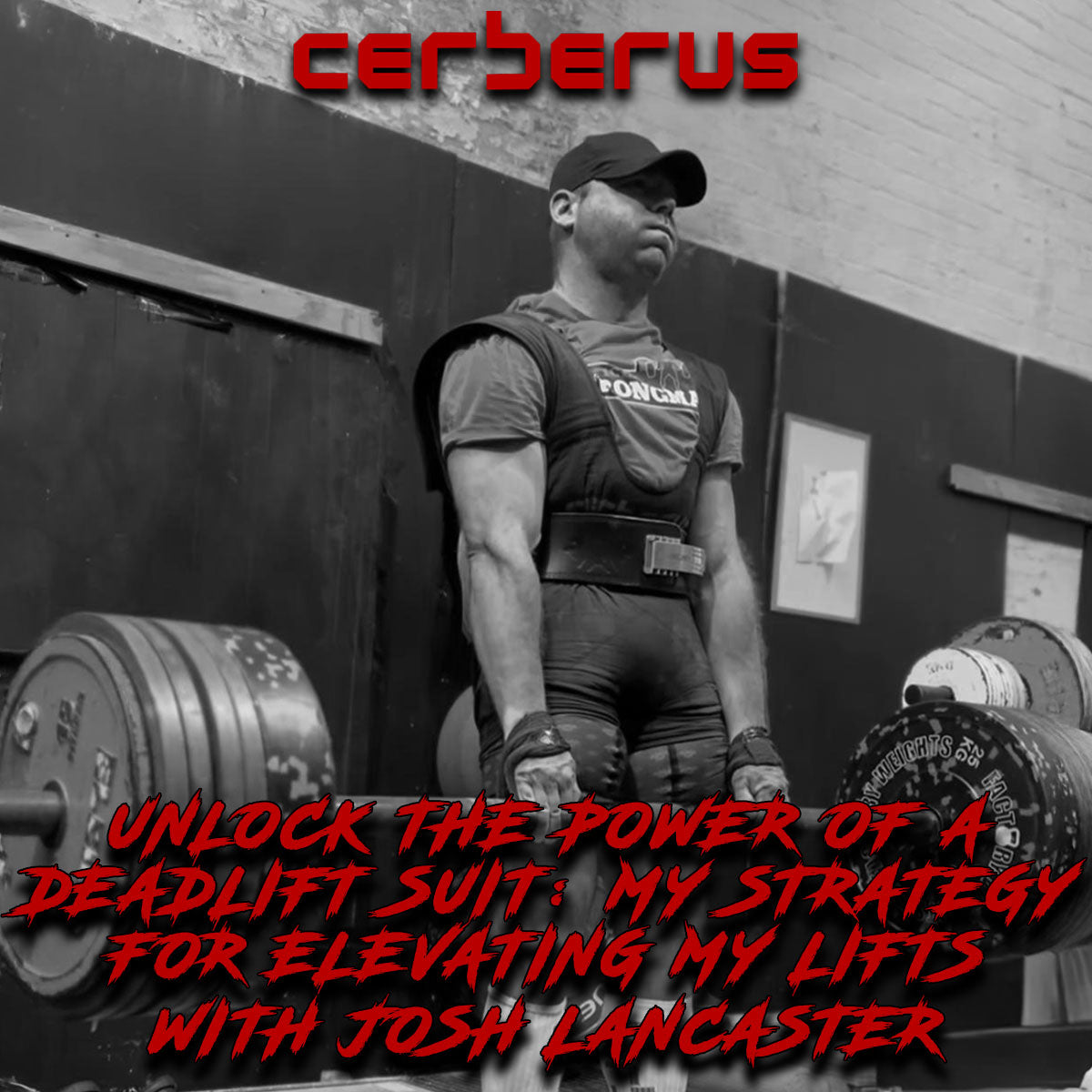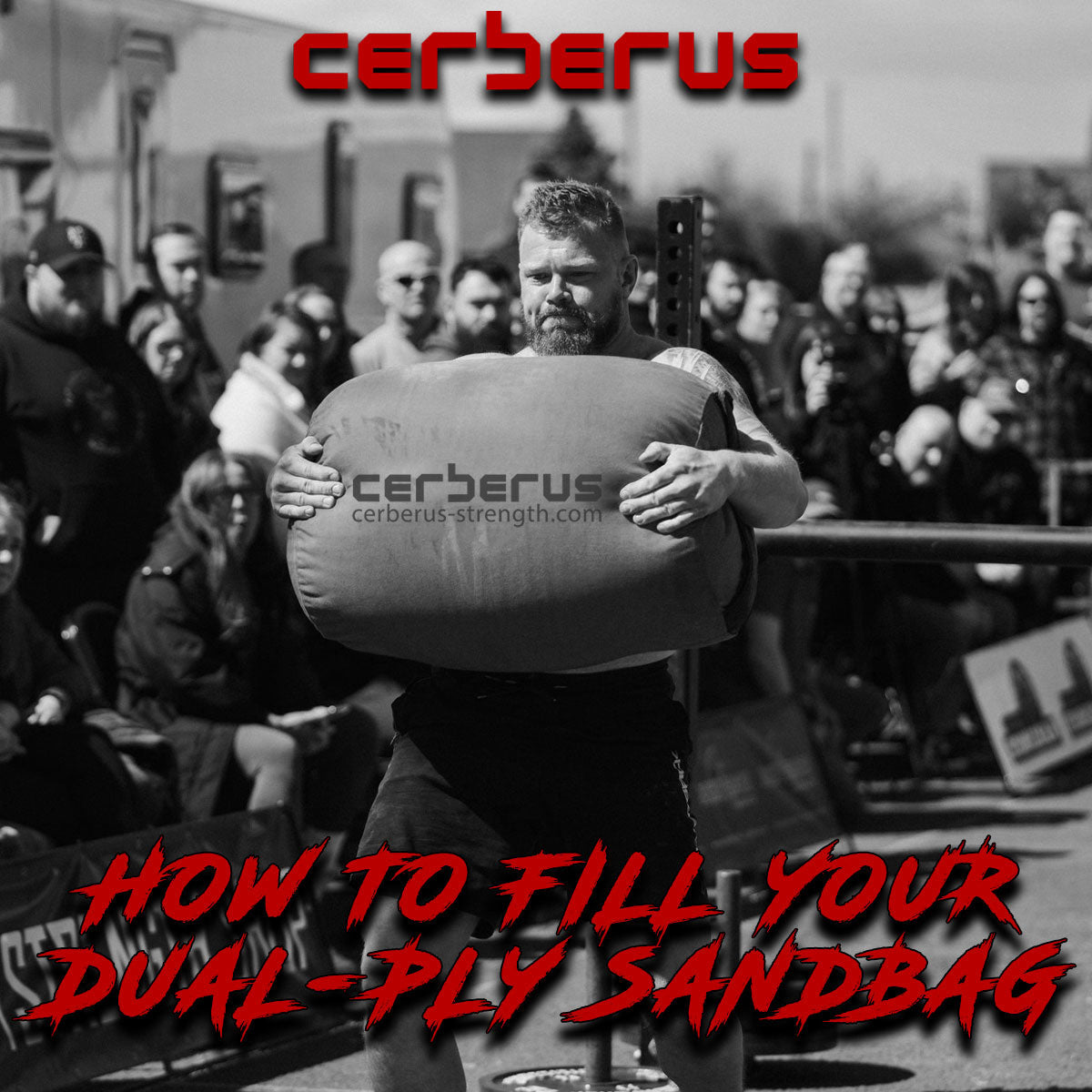This blog covers what a deadlift suit is, the benefits of using it, a general framework I use, and an FAQ section to address common beginner questions.
WHAT IS A DEADLIFT SUIT?
A deadlift suit is a tight-fitting, supportive garment designed to assist us in lifting heavier weights than we would be able to lift without.
Imagine the tension you create when bending down or squatting down in your favourite pair of jeans. Now imagine harnessing this tension intentionally.
Deadlift suits are becoming increasingly common in Strongman competitions at all levels. When 20% of your potential competition points are determined by how well you perform on deadlifts, to choose to abstain from learning the art of pulling in a suit, would be willingly putting yourself at a disadvantage.
HOW DOES A DEADLIFT SUIT WORK?
Some people may notice a benefit from the added tension and stability WITHOUT even altering technique compared to their raw stance.
However in order to maximise the benefit, I like to ‘load the suit’ by starting with a lower hip position than I would when pulling raw:
Imagine you’re wearing your jeans… are they more at risk of splitting when you bend over with straight legs, or when you bend down with hips and knees bent?
As you bend both your hips and knees, you create more tension in the material, which is effectively pushing you UP out of that position. This the power we’re looking to manipulate and maximise when pulling in a deadlift suit.
To do this I like to sit with my hips significantly lower with knees more bent than I would do when pulling raw. When loading the suit optimally, when assessing your deadlift from the side, it may look like a position that if you tried to pull in raw, your hips would shoot up immediately as you initiate the pull.
It’s impossible for someone to tell you exactly where this should be as the optimal position needs to be felt and found out through experimentation. A protocol I use for helping guide positioning is:
12x2 @ 40% of raw max, the first set set up in ‘raw stance’, the next 5-7 sets set up with lower hip position each time. Really take advantage of the feedback you receive on the way down after rep 1 before beginning rep 2, to help you ‘feel’ how to sit back into the suit. Using a slower tempo to control the descent can be really useful in terms of feedback you can ‘feel’. Every set that feels better/ stronger as you initiate, try a little lower hip start for the next set, until you reach the point you’re so low you feel like it’s not quite as good. Then for the remaining sets practise the position where you felt the best ‘bite’ point to start to make your new pattern more permanent.
To facilitate the lower position without sacrificing bar path, some lifters may find it beneficial to set up a centimetre or two further away then raw, to allow knee to track forwards to achieve the lower hips position. Again, no universal rule here, it really depends on your individual body make up.
Remember we’re not just ‘squatting down’…even though we’re allowed the knees to bend a little more than usual we’re still actively aiming to use keep most of our bodyweight behind the bar to create a ‘crow bar effect’ and lever the bar off the floor.
I’ve typically used a ‘multi-ply’ (thicker material) for more ‘maximal efforts’ such as 1rms, and kept the ‘single-ply’ (thinner material) in the locker for speedier events such as deadlift medleys.
However, the suit I currently use feels as powerful off the floor than anything I’ve used before, whilst being as comfortable as my old single-ply for getting down the bar. All I do is make a few amendments listed below, to tailor the suit to the objective of the session.
HOW I PUT ON AND USE A DEADLIFT SUIT?
- Lay The Foundations: I Decide what I’m wearing underneath…neoprene shorts to increase tightness? Slippy leggings to assist getting into position without the feeling of ‘digging in’?
- Step In And Shuffle: I like setting the straps as long as I need to effortlessly hook over my shoulders, so that I can ‘make the straps do the work’ to slide the suit up my legs towards the hip crease. Next I take the straps off and readjust to mid range, I hook the straps back over my shoulders then shuffle until hips are close to being into position, then make the straps a little tighter again.
- Check The Hips: I like to bend, shuffle, shallow lunge to make the suit ride up as far as possible WITHOUT making my crotch feel uncomfortable.
- Lock In: Once I’ve found the position on the brink of squashing my crotch (but not quite there!), I USE MY BELT TO LOCK IN THIS POSITION, and act as a braking mechanism to stop the suit riding up! I use CERBERUS X Pioneer Adjustable Lever Belt (13mm) for this. I lock it on the larger setting that feels tight yet comfortable.
- Invisible Lift: I undo the straps, I reach over my right shoulder for my right rear strap which I now keep grip of with my right hand, whilst then imagining I’m locking out a deadlift as normal, I then pull the rear strap down, and then use my left hand to reach the front right sided strap over my right shoulder to connect the Velcro and lock it into position. I then reach over to the other side to lock in the other side strap.
- Crank The Belt: Now the straps are in position, I carefully unlatch my belt just enough to unhook and reattach to a tighter setting, WITHOUT risking letting the suit ride up (uncomfortable!) which in turn would lose tension in the straps (lose effectiveness) by ‘letting the brake off’ (the belt).
- Attach To The Bar: I pick up my straps and proceed to connect to the bar. With hands inside the legs (like I’m setting up for a sumo deadlift) I reach over to the bar and attach my straps. I set my grip in my optimal stance. Once attached, I keep my hips high, then shuffle my feet in until they’re inside my hands. Next I set my feet and make sure I’m an optimal distance away from the bar. To do this I make sure I don’t set up too far away from the bar whilst providing enough space to sink my hips without contacting the bar with shins.
- Set And Lift: I then brace and hold my breath with legs almost straight, before lowering hips into start position and then lift. I then keep my breath held until at least the top of the rep (if I’m doing multiple reps), or until safely returned to the ground again (if I’m doing a single). Some lifters who struggle to ‘set the breath’ at the bottom due to the torso ‘getting in the way’, may find it beneficial to learn how to roll the bar away (to create space to breathe), before rolling in again to initiate the pull.
I Practise Lifting with a Lower Weight First: Weights as low as 20-30% of my raw max can offer me plenty of technical feedback to start - I proceed with caution, especially when exploring new positions.
BIGGEST MISTAKES TO WATCH OUT FOR?
‘My crotch feels too uncomfortable’ - USE THE BELT TRICK TO PREVENT RIDING UP’
‘II feel like I’m going to be sick’ - DON’T GO TO TIGHT TOO SOON
‘This gym doesn’t have a yoke to hang from, and my mate isn’t her to help me’ - IMAGINE YOU’RE ALWAYS GOING TO TRAIN BY YOURSELF, SEE ASSISTANCE FROM OTHERS AS A BONUS NOT NECESSITY
‘It’s giving me back pump’ - BE CAREFUL WHAT POSTURE YOU LOCK YOURSELF INTO (I’ve injured myself before by locking my lower back into an over extended position)
CAN A DEADLIFT SUIT REPLACE PROPER FORM AND TECHNIQUE?
Absolutely not. Build the foundation. I’m not a fan of giving arbitrary numbers for these (‘you need to pull 300 raw before deserving to get in the suit’), but I think you should definitely have a base level of solid technique and indeed resilience built before investing. I look at adding the suit as an extra step that’s only used on top of a solid foundation. Good form is essential and shouldn’t be overlooked.
FREQUENTLY ASKED QUESTIONS
Q: How much weight can a deadlift suit add to my lift?
- I use the magic 10% rule for most people. I like the 400lbs raw pull (ideally 182.5kg as a prerequisite for a 200kg deadlift), and like the 600lbs raw mark (or ideally 273kg+) for people chasing the magic 300kg. If you’re a 800lbs raw puller, you may have the prerequisite strength for 400kg. A 400kg raw pull could have you eyeing up 440kg in a suit in my opinion. I think actually 460kg raw or very close would be a needed prerequisite in terms of strength for the 505kg. I’m not saying you need to lift the pre-requisites, but probably be strong enough to if you tested.
Q: Are there any downsides to using a deadlift suit?
- Can be an expensive purchase, but if you’re looking to progress in most of the national pathways, having a suit to use is a prerequisite unless you want to effectively compete with one arm tied behind your back, so see it as an investment. If you’re a complete newbie to the sport, there’s less pressure, just wait until you get the itch to do competitions where suits are allowed.
- They can take a while to get used to (this guide can speed up the learning process).
- Can be risky getting the right size. Cerberus helps with that by offering returns, so that you can swap until you can get the best ‘off the shelf’ fit for you.
Q: How tight should a deadlift suit be?
- Snug, WITHOUT stealing your start position. Many people make the mistake of assuming ‘tighter the better’…until their deadlift suit arrives, then they learn that they can’t even reach the bar with the suit on, or even worse, they can’t even get the suit over the legs! I can pretty easily consistently hit the magic 10% in a suit which I can easily get the hips into position within 20 seconds, using straps that I tighten up and fasten myself. I’ve coached Tim Daglish to pull 350kg @ 85kg bodyweight, and win the deadlift ladder at OSG u80kg 2021 in a suit he could comfortably wear for a whole session, or easily slide on and off himself between big sets. I’ve seen Graham Hicks pull 450kg x 2 in a suit he just slips on over his legs himself (without the need of hanging from racks etc). Once more advanced, maybe consider investing in something tighter fitting over time.
Q: Opinions on novice comps using suits?
- Fantastic that it’s filtering down to this level! They’re used at elite level in every class now, so in order to be prepared for the higher classes, we need to start learning somewhere. The earlier the better for me. Maybe there could be a handicap system for people pulling raw vs suited, maybe something like at novice/intermediate level their score counts as 10% more if they pull without a suit compared to those who do. That way, people playing the long term game can practise using the suit, whilst the newer competitors aren’t pressured into buying a suit until they are sure. I’ve competed before at a competition and opted to take zero points in order to practise in my deadlift suit that wasn’t allowed.
Q: How much better is a custom made suit vs standard?
- My experience of custom made wasn’t great. I’ve had more success with an ‘off the shelf’ fit and use the tips above to calibrate a practical ‘fit’. If I ordered a custom one again, I’d order slightly bigger in all of the measurements.
Q: How can I scale the fit if in-between sizes or if I fluctuate weight?
- To tighten my lower body, I like using Cerberus Strongman Shorts V3 Black (2.5mm Neoprene), sometimes two pairs, sometimes coupled with briefs.
- To loosen my upper body, sometimes setting the straps loose coupled with wearing belts on the outside is enough to relieve enough pressure.
- When it's difficult to get over my legs, sometimes I'll apply baby powder to my thighs to reduce the friction, some people prefer 'slippy style leggings' for a similar effect.
- To tighten my upper body I like to wear my Cerberus 7mm Neoprene Back Support Belt V3, and if I’m leaner sometimes I’ll wear my 7mm Neoprene Underbelt V2 on top of that. If I need more padding out I’ve worn a jumper/hoodie underneath the suit in the past which has helped increase tension.
- If I decided I wanted to adjust the suit longer term, I would take it to a local tailor (I’ve done this in the past with a squat suit).
- Bonus tip: if legs are only slightly too tight, pumping up a pair of footballs or basketballs and leaving overnight can be a strategy to stretch slightly.
Q: What measurement is the most important to get right e.g. my thighs are 56 but 50 stomach?
- If you can’t get it over the legs it’s useless, so for sure make sure it will go over the thighs! My 75kg Mum has borrowed the suit I use at 95-100kg for a competition and achieved around the 10% benefit. It was baggy around the waist and even loose around the legs, but it did the job a lot better than a suit she wasn’t able to get into.
Q: I’m fast off the floor but slow lockout, I’ve heard that suits help people who struggle more with floor speed more than people like me?
- I think this is a myth. Sure the increased floor speed will help the person who struggles, but will also help the person who is fast off the floor to be faster, and therefore gain more momentum before the sticking point. I’ve yet to see anything that pulls me away from the 10% rule, regardless of pulling style.
Q: I want to do a suited phase but scared of my raw pull getting weaker?
- I’ve seen countless people improve their raw deadlift off the back of improving in a suit. I can’t recall anybody getting weaker at pulling raw as a result of getting stronger in a suit. The key is giving yourself a transition phase maybe 2-4 weeks to fill the skill deficit and learn ‘the feel’ of pulling raw again. I like to offset this risk of transition time cost in some cases by adding a secondary deadlift session (without the suit), something as simple as 6x2 @ 45-55% can plug in to most programmes without interfering with too much, certainly a good way of keeping skills sharp without emptying the tank.
Q: How to balance ‘being patient’ in the suit vs desire to pull the weight quick?
- If fast off the floor and slow lockout, being patient can help maintain a better position off floor and make lockout smoother. If lockout is good, but floor speed is lacking, I’d focus more pulling the weight quicker.
Q: How can I improve the hitch in a deadlift suit?
- Getting stronger at maintaining a flatter back angle from the floor can reduce the chances of needing to hitch.
Q: How would you program for a 1RM raw vs suited?
- Work more off effort or RPE scalable work when new to the suit. Certainly go off feeling until reliable data has been gathered in the suit. Common for people to max out when they get a suit, then struggle for subsequent sessions due to inconsistent positions. If you worked off a % of this first session then you could be soon in trouble.
Q: How long does it take to get used to it?
- Massively varies, some people are lucky getting a really good fit session 1 and picking up the skill right away seemingly. Others may take 10 sessions to get near their raw pull. Be patient, and stick with it, especially if you’re in this for the long term.
CONCLUSION
Function and Benefit: A deadlift suit adds support through fabric tension, which can help lifters increase their lift capacity by around 10%, making it valuable in competitions.
Technique: A lower hip start position can help me ‘load the suit like a spring’.
Setup Essentials: Supportive layers can help me increase lower body tightness. Using under belt and clothes can help increase upper body tightness. Using the belt can act as a ‘lock’ for the suit once the hips are in position to prevent the hips ‘riding up’.
Training Tips: New users could combine suited and raw lifts, starting at low weights for feedback on form, ensuring raw technique is retained alongside progressing with suited pulling.
The Suit I Use: CERBERUS Multi-Ply Deadlift Suit. I prefer to use my size 48 when lifting around 89-95kg body weight. I prefer to use my size 50 when lifting around 95-100kg body weight. Cerberus offers returns if yours doesn’t fit (so there’s no risk). Discount code: JOSHLANCASTER to save 10% on order placed through the Cerberus website (this saves you £22 on the current suits for sale).
The information in this blog post is opinion-based and based on what I’ve found that works for me through years of trial and error. It is designed for general informational purposes only. It is not intended as a substitute for professional advice. The techniques and protocols described here are general suggestions and may not be suitable for everyone. Please consult a qualified coach to determine if any exercises or techniques are appropriate for your fitness level and health condition. Consult with a reputable coach with a track record of teaching people how to pull safely and effectively in a suit. Remember every piece of supportive gear, including the suit, is a tool to potentially improve performance by helping you lift more in the context of competitions, not something that should be used instead of fixing an injury.
Shop the Cerberus Multi-Ply Deadlift Suit here - https://cerberus-strength.com/products/cerberus-multi-ply-deadlift-suit


